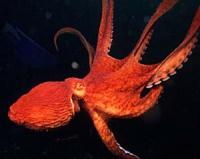
Whitbread’s Double Stout (1880)
#1

Posted 29 March 2009 - 01:05 PM
#2

Posted 29 March 2009 - 04:37 PM
#3

Posted 29 March 2009 - 06:09 PM
I use Thomas Fawcett brown malt. I'm bad at describing beers in detail. The best way to describe this one is a toned down RIS that is more about balance then harsh roast which is what I associate with a RIS. It's black with a slight rose hue when held up to the light. It has a nice mouth feel (medium-medium full) and a prominent aroma that suggests coffee and good chocolate. Overall the flavor is complex. Hops are there for balance, but not prominent by any means. You get a nice roast flavor, but I didn't get any harsh astringency that I associate with big stouts. The flavor of the brown malt, black patent, and alcohol meld together well with the age and create a very nice dark fruit character to support the roasty toasty flavors. People from my club really liked this ... even the people who claim to hate black patent with a passion. If there's anything I'm missing that you want to know just ask.No roasted malt? Interesting.Almost 50% of the bill is brown & black patent. Interesting. Do you use a certain type of brown malt?How would you describe this stout?zymot
#4

Posted 29 March 2009 - 06:53 PM
#5

Posted 29 March 2009 - 08:06 PM
#6

Posted 09 August 2009 - 04:34 PM
#7

Posted 09 August 2009 - 04:45 PM
I have 10 gallons of the 2nd batch of this aging in kegs as I type, and drank a 5 gallon keg of it last winter. This is a spectacular recipe IMO, and I plan to brew it x1/year. I am also planning to bottle a few from each batch to do vertical tastings to see how this progresses over the years. Tasting notes above (see March 29th post)This looks intriguing. (I followed your link from the "What should I brew when on R&R" thread.) Have you tasted any samples? Any reaction?
#8

Posted 03 October 2010 - 12:02 PM
Just put a keg of this on tap. ZOMG sooo tasty. Time to brew this years batch. I'll probably brew this at teach a friend on Nov. 6thI have 10 gallons of the 2nd batch of this aging in kegs as I type, and drank a 5 gallon keg of it last winter. This is a spectacular recipe IMO, and I plan to brew it x1/year. I am also planning to bottle a few from each batch to do vertical tastings to see how this progresses over the years. Tasting notes above (see March 29th post)
#9

Posted 21 June 2012 - 08:51 PM
0 user(s) are reading this topic
0 members, 0 guests, 0 anonymous users








